As a 26-year-old nursing graduate, Lucy Moseley knew life had something different in store for her from a career, marriage, children.
Lucy had a calling. She became a nun.
Now known as Sister Teresa, her family is God and the 20 nuns she lives with in a Fife monastery.
Dysart House, by Kirkcaldy, is one of 15 Carmelite monasteries in Britain.
Carmelite nuns dedicate their lives entirely to prayer, taking vows of poverty, chastity and obedience.
Becoming one – the order says – is an “uncompromising choice” on which the nuns are prepared to stake their lives.
Dysart Carmel is an enclosed monastery, meaning the nuns separate themselves from the affairs of the external world.
They go out only when absolutely necessary. Visitors are few and far between.
So I feel honoured to be welcomed in to meet the sisters and hear how this order became the family of Sister Teresa, 61.
Why Sister Teresa became a nun
Born in Somerset, Sister Teresa – then Lucy – was one of five children. She went to Catholic mass on Sundays but admits she became “lukewarm” in her faith as a teenager.
After gaining a degree in English she trained as a nurse, knowing God wanted something of her but unsure what.
She says: “I started to daydream about God an awful lot of the time.
“One day another student asked me what I was going to do when I finished my degree. I said I needed to do something more meaningful with my life. He looked at me with a quizzical smile and said, ‘you know what, Lucy, I think you’re falling in love’.
“I thought to myself ‘now you come to mention it I think I am – but you would never believe me if I told you who with!'”
Lucy considered joining the Mother Teresa of Calcutta nuns – also known as the Missionaries of Charity Sisters – who care for people in need.
As she contemplated her destiny someone she loved fell gravely ill.
She says: “I prayed to God ‘If you let his person get better you can take away the gift of my vocation.”
Then she learned about the Carmelite nuns. There was a book in a bookcase her brother was making about the order’s founder, Saint Teresa of Avila.
“I started reading it and she said ‘everyone should spend two hours a day in mental prayer’.
“By that I mean spending time in the company of the one we know loves us, i.e. Jesus.
“So I knelt down by my bed and after about five minutes I gave up because I couldn’t think of anything to say.
‘This is what I want to do for the rest of my life’
“I felt like I did when I went to a party and was introduced to someone I didn’t know.”
After that initial ‘failure’ she though life as a Carmel nun was not for her.
But then a realisation dawned.
Sister Teresa says: “I thought, ‘when I’m with my parents we’re often not talking but I’d far rather be with them than not with them’.
“I wondered if I could pray like that; just being with God but not saying anything.
“And it was so completely different. I thought ‘this is what I want to do for the rest of my life’.
“God had answered my prayer; He gave me this other vocation.
“At the same time the person I was concerned about got completely better.”
Mum was shocked but supportive
Her mother was shocked but supportive when she told her of her desire to become a Carmel nun.
Sister Teresa says: “One day I was home from nursing and I sat down with her in the kitchen and told her more or less what I have just told you.
“Tears came into her eyes. When I entered it [the order] was very strict, the enclosure.
“You saw your parents in a parlour with a fixed grill with bars. You could only see them once a month for an hour or so.
“I could see it was quite a shock to her but immediately she said ‘I think this is God’s will for you’.”
Sister Teresa joined a London monastery in 1986.
She came to Dysart in 2014 with two elderly frail nuns.
The Dysart monastery has an infirmary and takes frail and elderly nuns from other Carmel communities who are in need of care. External carers help look after them.
Life is busy in a contemplative monastery
Sister Teresa’s day starts at 5.30am with half an hour of keyboard practice before the other sisters rise.
She says: “You would be surprised at how busy life can get in a contemplative monastery. If I get up at 5.30am I can practice for half an hour and hope that I won’t be too terrible at mass!”
At 6.30am she rings the Angelus, which is a call to prayer.
The sisters briefly pray together before their first of two hours of silent prayer.
At 8am it’s the first set of Divine Office prayers before breakfast. There’s also daily mass and an hour of scripture reading.
Sister Teresa says: “Our prayer is not for us. It’s to try to be a channel through which God’s grace can flow onto the world.”
The day is interspersed with periods of work. That might be gardening, cooking, cleaning. For Sister Teresa, it includes paying carers’ wages.
Work is done and meals are eaten in silence as much as possible.
But modern technology has found its way to the monastery (Dysart Carmel has its own Facebook page).
Indicating her companion for our interview, Sister Agnes, Sister Teresa says: “Sister is brilliant at finding religious podcasts and we listen to them in the refectory while we eat.”
Sister Teresa keeps in touch with her sister and brothers by email and WhatsApp.
Shopping is ordered online.
So usually only for necessary appointments can the sisters be seen out and about in Kirkcaldy in their brown habits.
“Some sisters who have health issues have to go the doctor or the hospital or whatever,” says Sister Teresa.
Voting in the general election
“We go to the dentist and we went out to vote [in the general election].
“We get Asda deliveries but sometimes for one reason or another you do have to go out to do some shopping.
“I went out to get a new pair of wellington boots the other day.”
But Sister Teresa says the sisters have everything they need in life inside the monastery walls.
She sweeps her hand to indicate the sprawling gardens overlooking the Forth.
“With a view like that how could you feel confined?”
During recreation time the sisters chat while some sew and knit.
“You would think after 50 years we wouldn’t have much to say to each other but that is so not the case,” says Sister Teresa.
“There’s a lot of laughter and fun in the community.
“Our chaplain often goes for a walk in the garden when we are not around. One time he said to Sister Francis ‘what were you talking about at recreation? You were all absolutely hooting with laughter!’
“There’s never a dull moment.”
Being God’s children is the foundation of the lives of Sister Teresa and her family of 20 sisters in Dysart, she says.
“It’s because of God that we have come together.
“It amazes me that even before the universe began that God had each of us in mind and chose us out of love to be adopted as his children.”
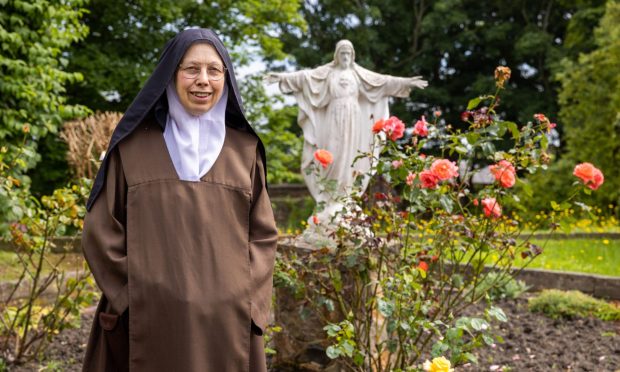
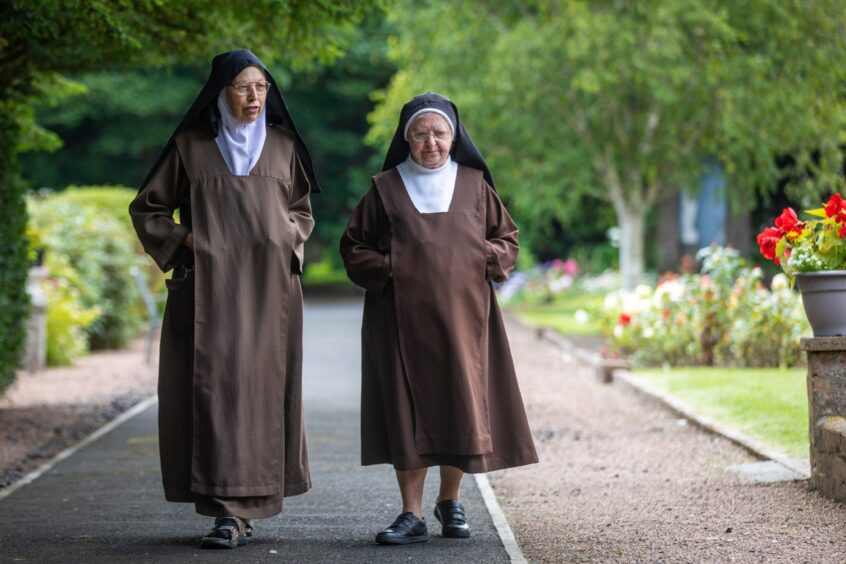
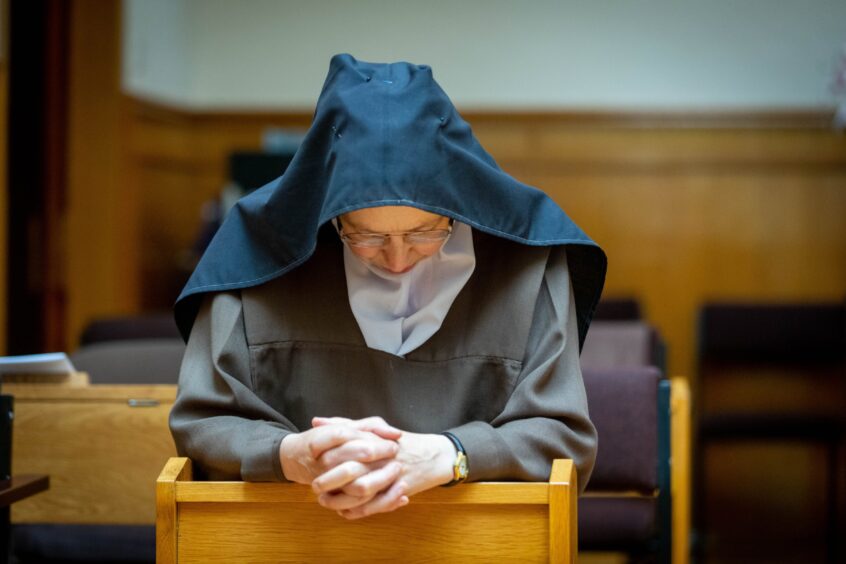
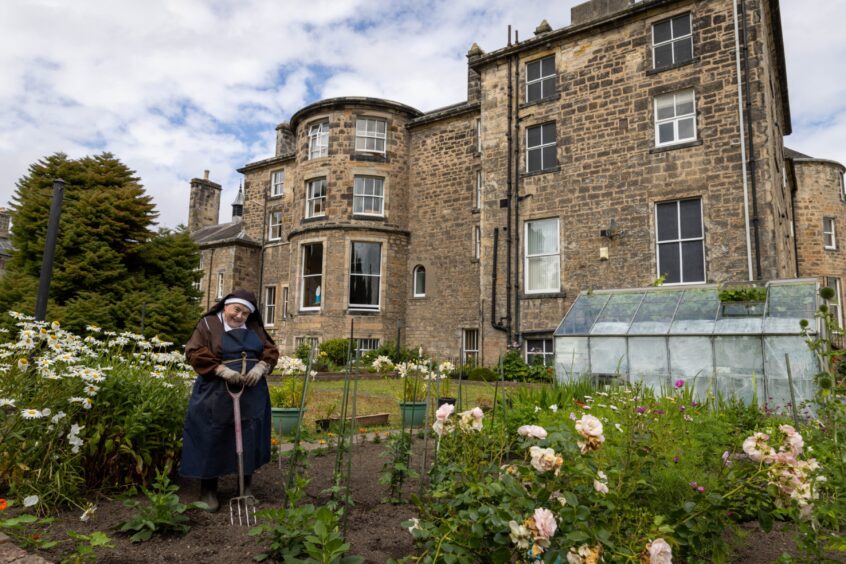
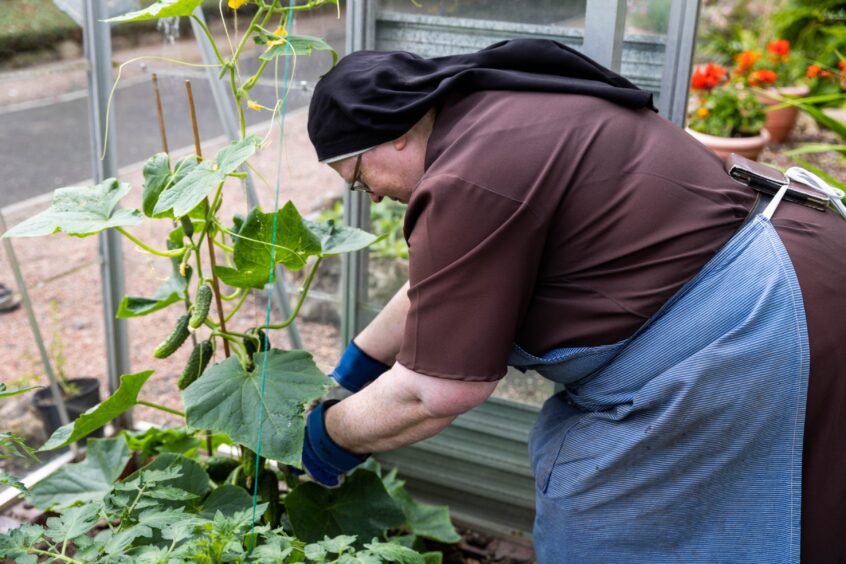
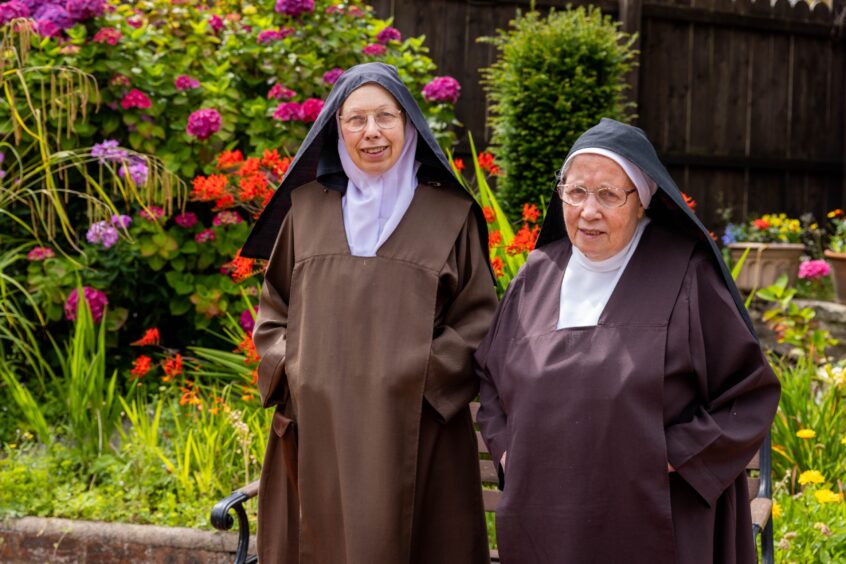
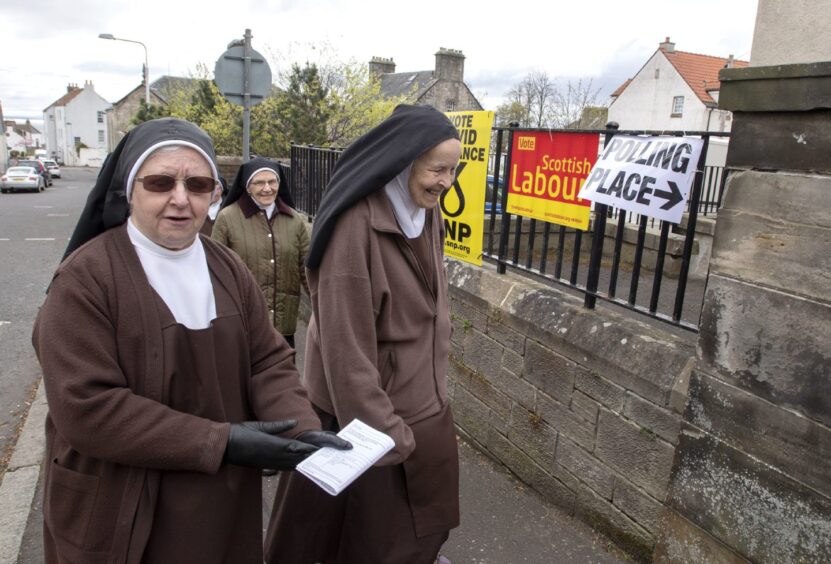
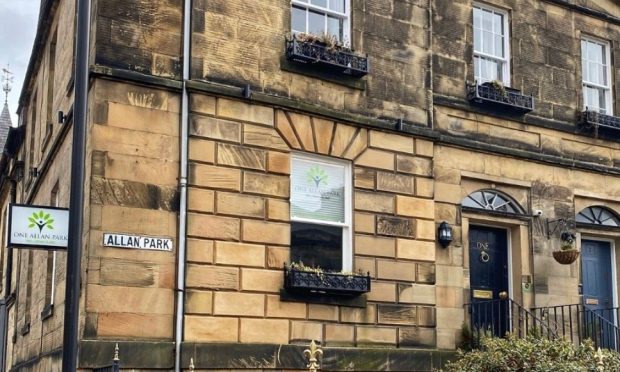
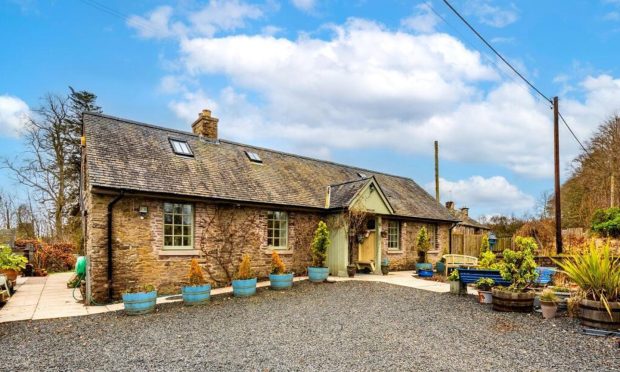







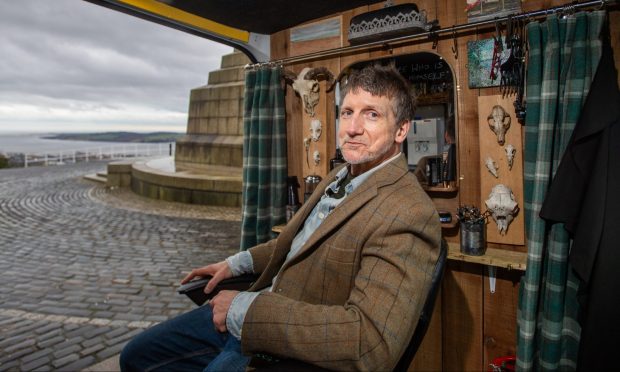
Conversation